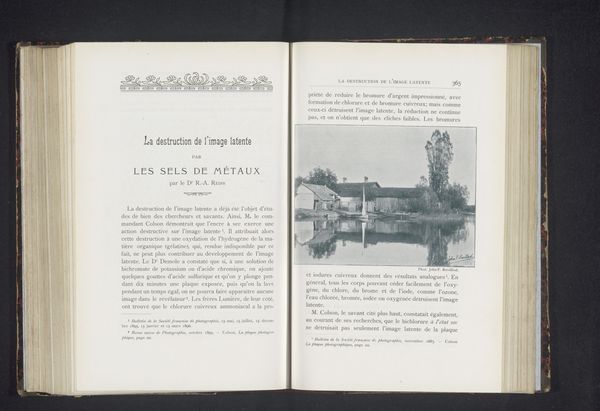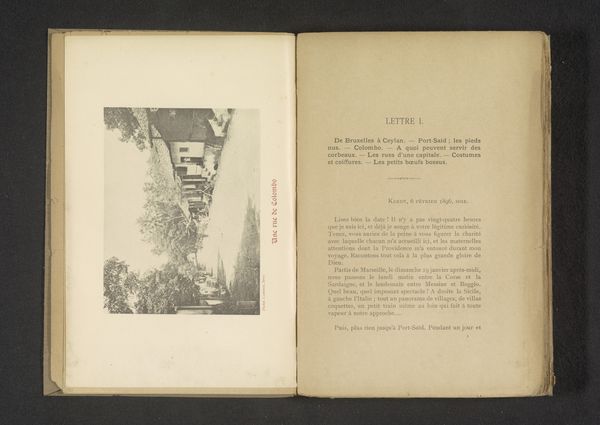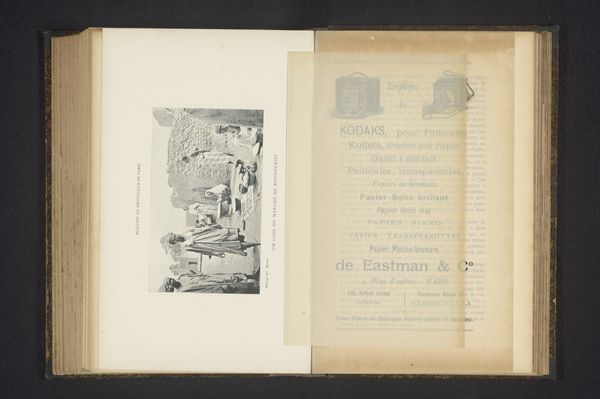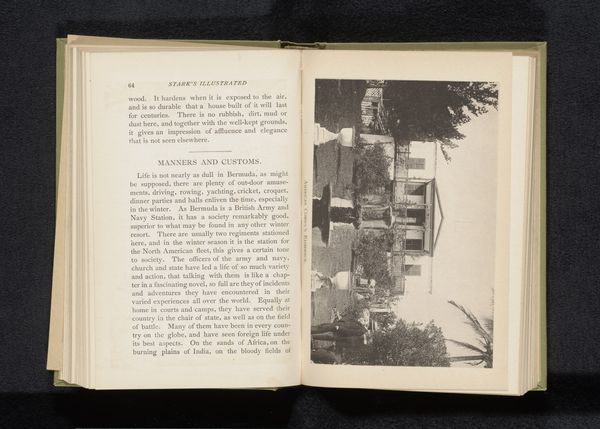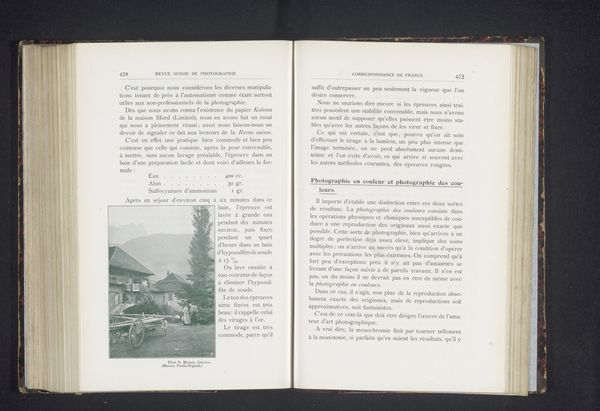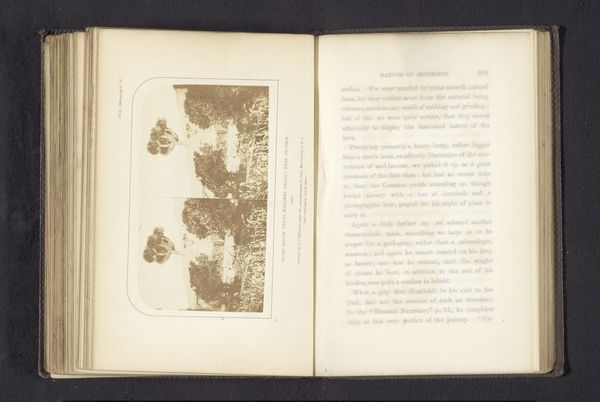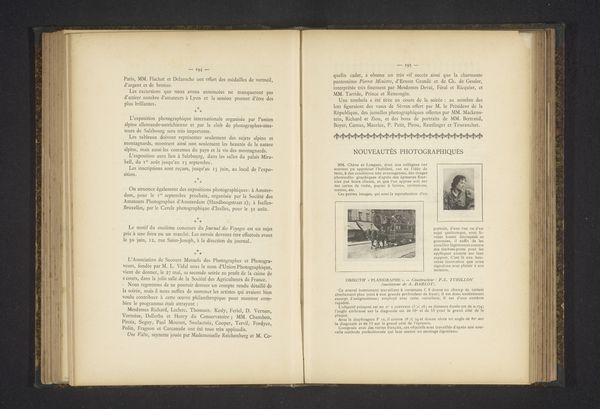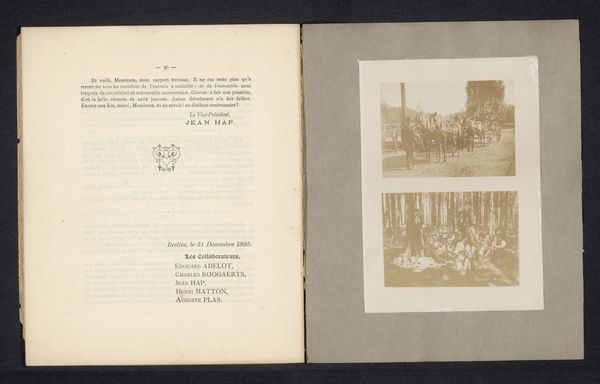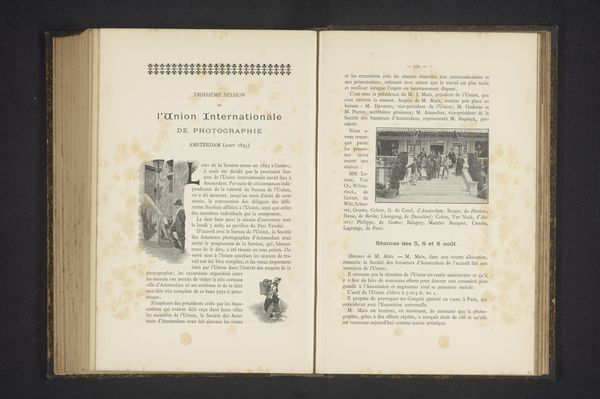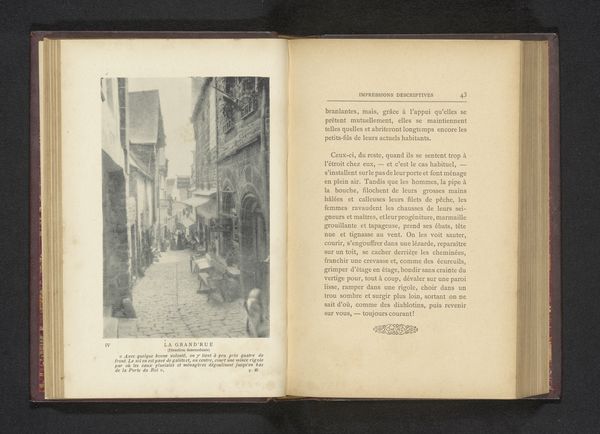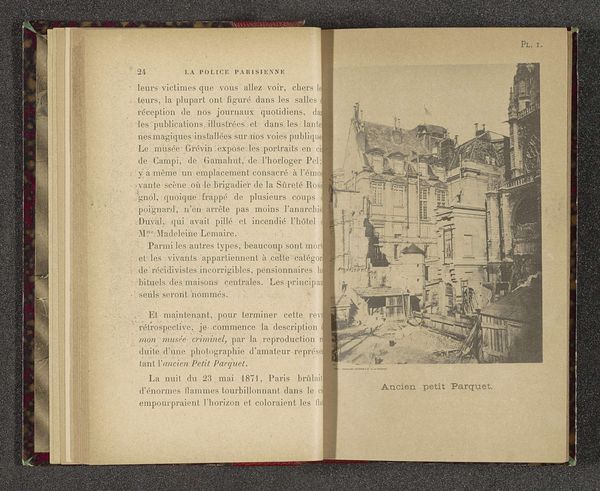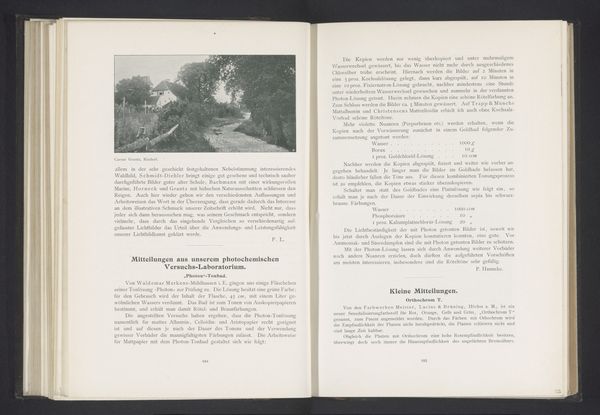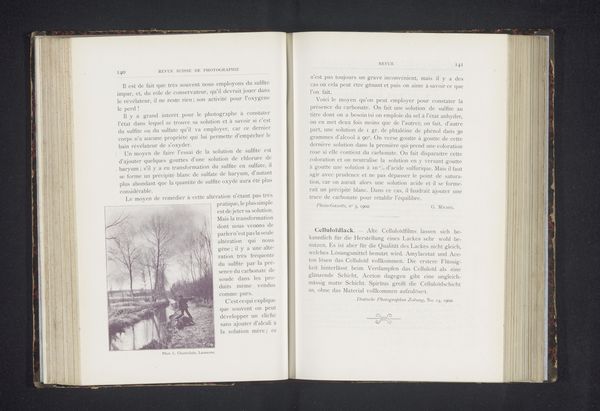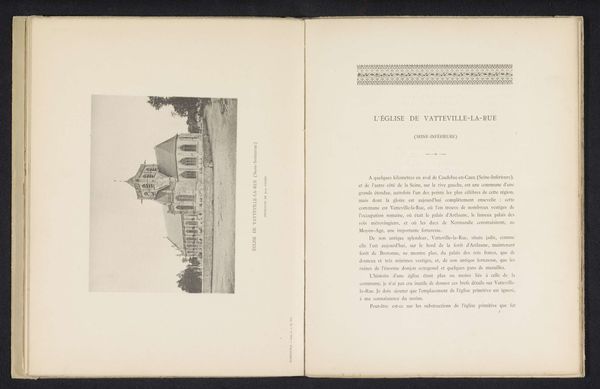
print, photography, collotype
#
still-life-photography
# print
#
landscape
#
photography
#
collotype
#
watercolor
Dimensions: height 82 mm, width 106 mm
Copyright: Rijks Museum: Open Domain
Curator: Let's explore this photograph, "Huis en een waterpartij in een landelijke omgeving", which translates to "House and water feature in a rural setting." It's attributed to an anonymous artist, dating to before 1895, and was realized as a collotype print. Editor: My initial impression is one of serene quietude, it’s incredibly tranquil. The reflections on the water's surface are soft, the whole image feels very delicate. Almost dreamlike, but quite crisp in its rendering. Curator: Collotype printing was prized for its tonal range and ability to reproduce photographic detail, even as it existed along mass produced imagery and text, as we can clearly see in this bound copy. In this case, it was commonly used for illustrating publications, effectively democratizing access to images, thus making art available outside of gallery walls. Editor: Yes, it underscores how images became integrated into everyday life and accessible beyond the elite classes. The materiality is so fascinating to me here; looking at how the ink lies on the page, how it renders the specific textures of foliage, the stone on that humble house, that to me speaks volumes. I see both art and documentation working in tandem here. Curator: It absolutely points to the changing role of photography during this period, shifting from being purely documentary to encompassing artistic expression. This also illustrates the tension that rises around this same period in fine arts where questions emerge concerning what kind of images are worth disseminating. Editor: Exactly, it is also challenging established boundaries of what counts as art by documenting modest everyday scenes versus grand, historical, or mythological subject matter. And I wonder about labor--consider the processes behind capturing the initial image, preparing the printing plate, and running the presses… each impression required skilled labor. Curator: Indeed. Viewing this anonymous print through the lens of the broader photographic context provides insights into the technology, society, and aesthetics of its time. It allows us to ask about the historical importance of the imagery being distributed as a physical print, an aesthetic decision as much as a functional one, inside of a bound publication. Editor: I agree. Thinking about it, what appears as a calm scene is really this whole intersection of materials, technologies, social conditions. And I think what draws me to it, too, is its subtle assertion of value, a sort of claim for dignity through representation. It urges us to really value these everyday spaces.
Comments
No comments
Be the first to comment and join the conversation on the ultimate creative platform.
